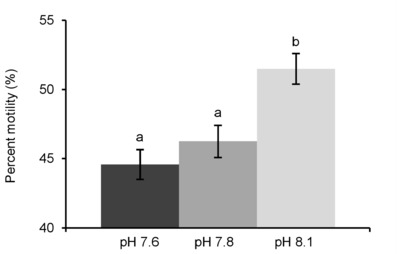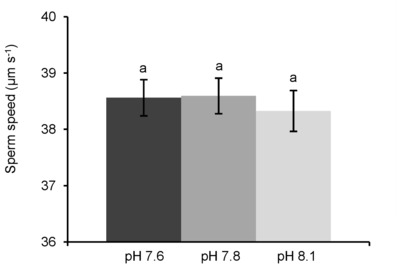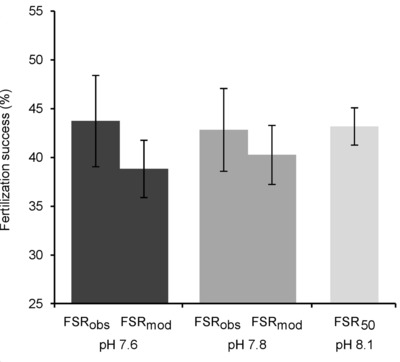Under the CO2: sea urchin reproduction during ocean acidification
Monday, 11 February, 2013
Rising levels of carbon dioxide don’t just affect the atmosphere, with the ocean absorbing this CO2 and consequently becoming more acidic. There have been some studies into the effects of ocean acidification on groups of marine species, assessing this through the mean responses of gametes or larvae.
But just like with humans, there is variation among species at an individual level. And if there are individuals who cope with the effects of climate change better than others, they may hold the key to the survival of their species.
This idea is being investigated by a Macquarie University research team, led by PhD researcher Peter Schlegel, who examined the reproductive process of the common purple sea urchin (Heliocidaris erythrogramma) - a species with highly variable intraspecific fertilisation. The researchers stated, “Environmental factors directly affect populations by selecting resilient individuals.” In free-spawning organisms, they claim, such resilience can be found “at the critical life stage of fertilisation”.
The researchers compared the effects of present-day conditions in southeast Australia (ph 8.1) with those predicted for the end of the century by the IPCC’s fourth assessment report (ph 7.8), as well as a high CO2 scenario to represent the year 2300 (pH 7.6). Experimental CO2 treatments were achieved by bubbling a mixture of air and CO2 through filtered seawater.
Eighteen male and 18 female urchins were paired together. Gametes, eggs and sperm were collected; the sperm and eggs were briefly diluted in seawater at one of the three pH conditions, then mixed and left to fertilise in filter dishes containing seawater of the relevant pH. The eggs were later rinsed again in seawater and left for 2 h to develop. Fertilisation success rates (FSR) were determined by counting the proportion of cleaved eggs in vivo.
First, the motility (ie, the ability to move spontaneously and actively) of the sperm was analysed. Sperm at the control level of 8.1 had the highest average motility at over 50%; this decreased by 7% at the pH of 7.8 and another 2% at 7.6. Individual responses differed more significantly, with reductions in percentage of motile sperm ranging from -6.5% to -15.7% at 7.8 and -9.7% to -17.4% at 7.6. Clearly, some sperm were less affected than others.

Furthermore, the average speed of the sperm was not significantly affected by acidification; in fact, it was actually slightly higher at 7.6 and higher again at 7.8. Once again, there was variation in the individual responses: +2.4% to -1.1% at 7.8 and +2.9% to -1.4% at 7.6.

Finally, the rates of fertilisation were analysed and compared to the control rate of 50% of maximum fertilisation success; this rate was decided so both positive and negative effects could be observed. Not only was the observed rate of fertilisation higher than that which was modelled (ie, predicted), there was also a high amount of variation, with responses ranging from moderately positive (11% and 14% increases in fertilisation success at 7.8 and 7.6, respectively) to strongly negative (≤44% and ≤79% decreases). Furthermore, there was no one reason for this change in fertilisation - the change in sperm motility seemed to affect 34% of fertilisation success at 7.8 but only 4% at 7.6.

The researchers thus noted that while mean fertilisation was only marginally affected overall, there was significant interindividual variation, with most individual pairs having less fertilisation success under acidic conditions but some having more. While previous studies have found such results “contradictory”, the researchers believe this to be a combination of the use of saturated assays or smaller sample sizes in these studies, and the simple fact that intraspecific variation exists, as shown in the current experiment.
“This illustrates the importance of examining individual responses: it is individuals that contribute differentially to the next generation - not group means,” said the researchers. “Consequently, approaches that assess the group mean response ignore evolutionarily important effects of rare individuals that may contribute disproportionately to the next generation.”
Although the more resistant individuals have an important part to play in their species’ fight against climate change, the researchers did note that if their variability is heritable (as opposed to being based on factors such as egg condition), the loss of less competitive genotypes will reduce overall genetic diversity, at least initially. This may be counteracted by new mutations; nevertheless, “Any selection that reduces available genetic diversity leaves future populations less capable of tolerating further perturbations, and this underscores the need for analyses of the fitness of the descendants resulting from experiments such as those we have described here.”
The researchers’ study has been published online in the journal PLOS ONE. They believe that the conducting of similar studies on interindividual variability is “imperative” to understanding the potential for marine species to adapt to climate change.
European Space Agency inaugurates deep space antenna in WA
The ESA has expanded its capability to communicate with scientific, exploration and space safety...
Black hole collision supports Hawking's landmark theory
Astrophysicists have witnessed a collision between two black holes that was so loud, they were...
Uncovering differences in wild and domesticated crops
Researchers have revealed insights into the genetic make-up of wild varieties of common crops...



